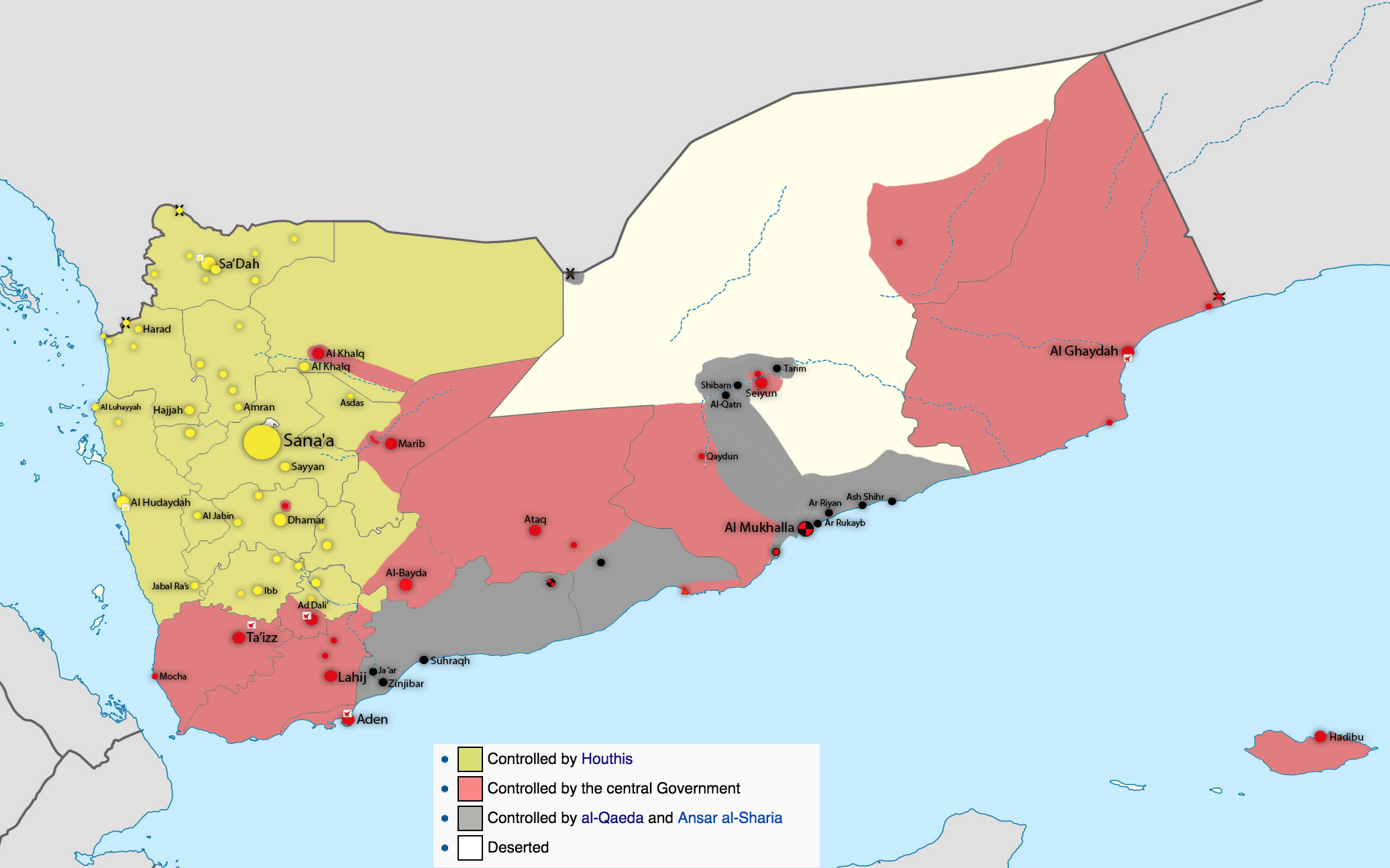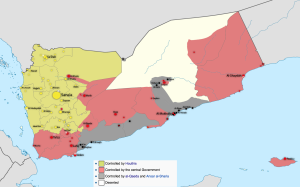In Yemen, Sectarianism Trumps Nationalism
 Photo Courtesy of Wikimedia Commons
Photo Courtesy of Wikimedia Commons

For Yemen, which is 40% Shia and 60% Sunni, there seems to be no end in sight for conflict and political strife. Modern Yemen was formed in 1990 with the unification of tribal North Yemen and Communist South Yemen. Since then, the country has been plagued by political infighting between southern secessionists and the supporters of a unified Yemen, as well as between Shia Houthis and the central government.
In 2004, the rivalries between the Iran-backed Houthis and the Saudi-supported Yemeni government escalated into a fully-fledged civil war. The situation became tenser in 2011 in the wake of the Arab Spring, when mass protests led to the overthrow of Ali Abdullah Saleh’s government.
The power vacuum created by the 2011 Yemeni Revolution strengthened the relative positions of the Shia Houthis and Sunni Al-Qaeda at the expense of the central government. Indeed, Houthis in the Northwest expanded their reach towards Sana’a both through violence and through tribal politics,[1] whilst Al-Qaeda in the Arabian Peninsula (AQAP) continued seizing territory in the Southern and central parts of the country.
Today, prospects are grim. The Houthis have become the unofficial authority in Yemen. However, in order to consolidate their power, they will have to unify the nation and overcome sectarian tensions[2] both political and religious; a task easier said than done, especially with AQAP cementing their hold on certain southern regions despite US drone strikes. Indeed, against the rise of Houthi power in Yemen, Al Qaeda in the Arabian Peninsula is gaining popular support as protector of Sunni Islam, emphasizing the sectarian nature of this conflict. Moreover, “the suspected involvement of Iran in Yemen, accused of financing and supporting the Houthis by some observers, has given further ammunition to AQAP and adds additional complications.”[3]
Political and military officials in the Sunni Southern provinces have stated they reject the coup and will no longer take orders from Sana’a,[4] perhaps in a move towards secession. Amid this chaos, it is rumored that former President Ali Abdullah Saleh – whose son is in command of the Republican Guard – has backed and financially supported the Houthis. Yet, it appears he now seeks, with his General People’s Congress party, to either put his son, Colonel Ahmad Ali,[5] or his aide, Sahya Al-Raiee,[6] in power as temporary president for 60 days.
The United States has backed Hadi’s government, providing it with over one billion USD in aid since 2011[7] and pushing for UN sanctions on the Houthis.[8] Nevertheless, it does not seem likely that the United States will intervene directly to prop up Hadi. Instead, in a desire to continue its counter-terrorism operations against AQAP — who has claimed involvement in the Paris attacks on Charlie Hebdo — Washington has reached out to the Houthis[9] hoping for future cooperation against their mutual enemy.
One Houthi commander said “the U.S. provided logistical aid to the militants and exchanged intelligence on AQAP to support the Houthis’ operations against the group and pinpoint drone strikes.”[10] Indeed, it seems as though supporting Hadi would be defending the losing side, whilst abandoning all efforts in the region would lead Yemen — already a failed state — to become an even more important haven for fundamentalist groups. This makes cooperation with the Houthis a necessary move in the fight against Al-Qaeda, especially if the Houthis are here to stay.
This development would put the U.S. on the same side as Iran, not only in the fight against Daesh/ISIS in Iraq, but also now in Yemen, which might further antagonize Saudi Arabia and the other Sunni Gulf States. Saudi Arabia’s new monarch, King Salman, will be tested, both in his reaction to the U.S. support of the Houthis in Yemen, and in his dealings with Sana’a. Indeed, Saudi Arabia will also have to choose between the lesser of two evils. With Hadi out of the game, the only remaining players in Yemen would be Saleh, the Houthis and the al Islah party, a reformist party that is part of the Muslim Brotherhood, a sworn enemy of the Saudi Monarchy.
___________________________________________
[1] Baron, Adam. “Yemen’s Transitional Road Map to Chaos.” Foreign Policy 26 01 2015.
[2] El-Naggar, Monna. “Houthis Reach Out as They Cement Power in Yemen.” New York Times 29 01 2015
[3] Habeck, Mary. “Yemen Collapses: Why It Matters.” Insite Blog. 27 01 2015
[4] Bayoumy, Yara. “Yemen risks disintegration as south rejects Shi’ite group’s takeover.” Reuteurs 25 01 2015
[5] “UAE website: Son of deposed President Saleh will assume Yemen’s presidency.” Middle East Monitor 01 02 2015
[6] Madabish, Arafat. “Yemen: Rift opens between Houthis and Saleh, say sources.” Asharq Al-Awsat 3 02 2015
[7] Rayman, Noah. “Houthis’ Rise in Yemen Risks Empowering al-Qaeda.” Time 22 01 2015,
[8] “Instability in Yemen.” Economist 24 01 2015.
[9] Solomon, Jay, Dion Nissembaum, and Asa Fitch. “In Strategic Shift, U.S. Draws Closer to Yemeni Rebels.” Wall Street Journal
[10] Ibid.
